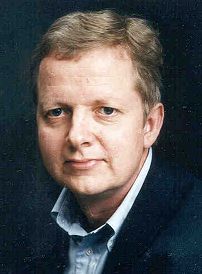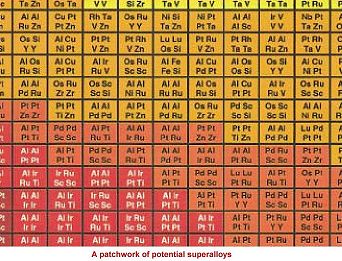Quantum mechanics and biological evolution could be combined to make a host of new materials, such as tough, lightweight superalloys.
Jens Norskov and his colleagues at the Technical University of Denmark are coupling revolutionary quantum mechanical techniques with an evolutionary search algorithm inspired by natural selection to find new super alloys. Their method, however, could be used in the discovery of new materials for use in everything from electrical batteries to catalysts for chemical reactions as well as the more traditional stamping ground of superalloys – the aerospace and rocketry components that can withstand protracted exposure to temperature above 650 Celsius while in operation.

Jens Norskov
Until recently, predicting the properties of a particular blend of metals without actually creating the alloy has required incredibly unwieldy computational techniques. Moreover, the characteristics of new alloys tend to reveal themselves fully only experimentally once the material has been made. After all, even a handful of metals can be combined with each other in hundreds of thousands of possible arrangements. The hunt for better alloys has typically required patience and luck.
Norksov’s team, however, wanted to bring a more rational approach to bear on the design of novel alloys. They have now identified twenty promising alloys from a possible two hundred thousand combinations, without making a single alloy in the laboratory.

An array of combinations
Their method is based in part on a modelling technique known as density functional theory (DFT), which was the subject of the 1998 Nobel Prize for Chemistry. DFT can help predict material properties by modelling the way electrons change depending on how the atoms in the material are hooked together.
Norskov and his team could have simply applied DFT to the myriad possible alloys, but instead they began investigating alloys containing four metals and used a process of natural selection to pick out the fittest. To start, they generated a population of alloys – on the computer – each consisted of the possible combinations of four metals selected from thirty-two candidate metals. They then mutated and randomly bred the metals to create offspring. They then picked out the most stable materials and allowed the offspring to breed with each other to make a new generation and so on until they had selected the fittest group of combinations.
They tried to bias the result by starting with several different initial alloy populations but each time the same final group of alloys survived. Interestingly, the generation game spawned several super alloys that were already known, which lent great credence to the approach. But, more importantly, other survivors included a number of super alloys that are yet to be investigated experimentally. The researchers hope believe these materials may just as good if not better than the known super alloys produced.
Norskov points out that stability is not the only criterion for choosing an alloy for a particular application but picking out unstable materials is pointless, so it is a crucial first step in a process of discovery that will greatly cut down on expensive and time-consuming laboratory work.
Further reading
Phys. Rev. Lett., 88, 255506 (2002)
http://link.aps.org/abstract/PRL/v88/e255506
DOI: 10.1103/PhysRevLett.88.255506
Jens Norskov
http://www.camd.dtu.dk/Medarbejdere/Jens_cv.aspx
1998 Nobel Prize for Chemistry
http://nobelprize.org/nobel_prizes/chemistry/laureates/1998/
Suggested searches
Super alloys
Density functional theory